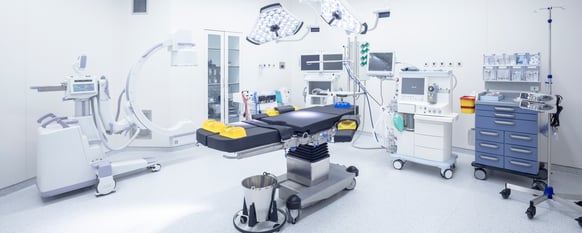Leaders in technology all over the world are starting off the year focused on a review of the last twelve months, and also where the next decade’s marketplace trends will lead us. The latter is being highlighted by the Uptime Institute, with the increasing needs of resiliency and risk, cloud and innovation, upward demand curves, and the Edge. Across this vast landscape there are a few things which stand out in a very applicable way in the worlds of Critical Power and Thermal Management.
The first is not a shocker: Data growth is happening, and it’s not slowing down anytime soon. Explosive growth is being driven by data warehousing, IoT, Machine-to-Machine learning, and, of course, AI. The Global Datasphere is expected to reach 175 Zettabytes in the next five years, and all this data will need to be collected, processed, distributed, accessed, stored, and backed-up.

Data centers will continue to see an influx of compute equipment, demand for maximizing floor space, and an increasing need to leverage hardware and software innovations. There will be immense pressure on data center operators to assure every variable is considered.
In today’s environmentally-friendly-focused world, it’s no surprise that data center energy consumption and remedying inefficiencies are also rising priorities. By the end of the decade, we should be able to see significant strides in the worlds of “Green Power” (i.e. Wave and Wind Power, Carbon Capture, and future technologies), and begin to see how the improvements we’ve made in critical facilities are impacting the environment.
However, the power conundrums of today also need answers. The strategies behind uninterruptible power, switchgear controls, generator “use”, and cooling efficiencies are the ways data center operators can positively affect their usage and costs in 2020 and beyond. The data center equipment that are powering and cooling environments today were great at the time of their installation, whether 25, 15, or even five years ago, but recent technological advancements provide answers to problems of energy inefficiencies and improvements to power consumption expenditures.
The realms of Thermal and Power are seeing advancements like iCOM, remote monitoring software, and leveraging stand-by for active applications. These efficiencies have evolved over time. We at DVL have helped orchestrate this evolution for our customers, which allowed us to learn how to recognize the most value from each project. Technology offers an amazing opportunity to reduce costs, manage easier, and improve impacts on the environment – but only if it’s being utilized.
Finally, that brings us to the Edge. But first, a pop quiz: Would you define the Edge as:
- A Regional Data Center
- A key to the future of infrastructure driven by 5G
- Facilities sitting somewhere between On-Prem and the Cloud
- Whatever it needs to be, as long as latency is reduced
- All of the above
Fact is, defining the Edge probably depends on who you’re talking to. The Edge is something we at DVL have seen evolving for years as we have helped customers shape what it looks like in their networks. In the Northeast US, land is at a (pricey) minimum, and businesses have been needing to think about new ‘outside-the-box’ locations for data management for a long time. In the west, data center builds are constructing closer to renewable energy sources. And everywhere is starting to think about ‘data thinning’ in an effort to distribute compute capacity while reducing latency.
Our efforts in engineering on the Edge have included everything from regional data centers to enhanced IT closets. In many instances, repurposing existing non-technical space into a data center is at the core of the project, and something DVL Engineers embrace, in an effort to tailor solutions to your needs.
All of these trends intertwine – data tonnage is changing how we efficiently power and cool data centers. Energy availability and renewability is impacting building from the Core to the Edge. The Edge is evolving as the data tsunami continues to grow.
With technology becoming an ever-increasing part of life, the data center world is going to feel the pressure of being the heartbeat of how the world operates. Engineers are tasked with expanding the abilities of the infrastructure, making sure it's not killing the environment, and assuring it's "always available" - oh and getting the most value from every investment. Our team at DVL has been addressing these same needs for 35 years, and we’d love to understand how we might be able to do the same for you.

















